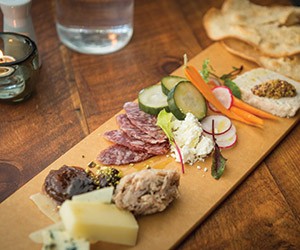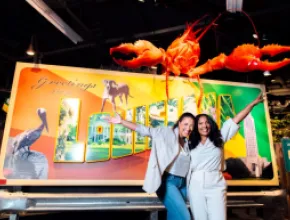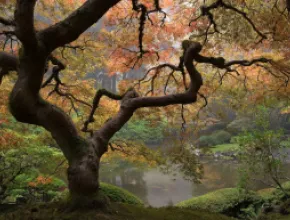Distilling the essence of Tucson, Ariz., into a nutshell is a bit like forcing an elephant into a phone booth; it simply can’t be done.
Sure the locale has an Old West reputation and ample cowboy experiences to match, but Arizona’s second-largest city is also a progressive college town, a community of uniquely mixed cultures and a bastion of natural wonders to boot.
There’s just too much Tucson to wrap up in a neat little package, but Graeme Hughes, director of sales for Visit Tucson and a resident since 1984, gave a game try of it, resulting in plenty of details that paint the true landscape of this multitiered metropolis.
“Tucson is to Arizona what Austin is to Texas,” Hughes says, drawing parallels between the cities’ forward-thinking natures, vibrant youthfulness and university-infused cultures and nightlife. “I like to call Tucson an escape from the pretentious and unoriginal. We’re a ‘come-as-you-are’ kind of community.”
And groups coming to Tucson will discover iconic settings and experiences of all flavors. What follows are some of the city’s very best.
A Cultural Triangle
An exploration of Tucson’s heritage should start with its location about 60 miles north of the U.S.-Mexico border.
“The Spanish and Mexican-American influence is in our cuisine, our art, our music,” Hughes says, adding that Tucson draws ample visits from our neighbor to the south and that the bureau even offers a completely Spanish-language website with totally different content than its main site.
Among the myriad ways to experience this rich subculture is a unique Mariachi mass, held each Saturday morning at the handsome and historic St. Augustine Cathedral at 8 a.m., or via the popular Mariachi Festival hosted by the Casino Del Sol each April. For a memorable group dining experience, Hughes urges planners to ponder El Charro Cafe, in operation since 1922 and hailed by Gourmet magazine as one of America’s 21 “legendary” restaurants. There are numerous private dining spaces at the original downtown locale—including a charming wine cellar—and nearby branches in the Oro Valley and Ventana neighborhoods.
PageBreak
Hispanic heritage also shines at Mercado San Agustin, a downtown hub of shopping and cuisine that frequently hosts live music and special events, including cooking classes.
As host to the nearby Pascua Yaqi and Tohono Odom tribal communities, Tucson also showcases a substantial Native American heritage. And for a gamut of dining and entertainment options, the Pascua Yaqi operate the Casino Del Sol, a trove of gaming and cuisine that also features ample lodging and a conference center.
Tucson’s Old West heritage, an “Anglo-Western Cowboy Culture” in Hughes’ words, brings yet another fascinating cultural element to the table. A variety of outfitters and settings include several heralded ranch venues, with Hughes shining a spotlight on the White Stallion Ranch, Tanque Verde Ranch and Hacienda Del Sol guest ranch in particular. The trio of venues offer elegant lodgings, amenities and upscale dining in addition to outdoorsy offerings, and have a strong emphasis on hosting all kinds of groups.
College Town Comforts
Of course, not all groups are made for ranch retreats, even regal ones, and to that end Hughes touts Tucson’s eclectic lodging inventory, which includes some top-tier properties from hoteliers like Loews, Marriott, Omni and Wyndham, plus countless other options.
“A lot of planners see us as a resort destination, and we are, but we also have a lot of full-service, mid-level hotel offerings,” Hughes explains. “It’s really a broad spectrum.”
It’s also here where the community’s ‘college town’ elements come into play, with the University of Arizona and its 35,000-plus students adding a vibrant energy and reliable hospitality workforce.
“All our properties are staffed with young, energetic people,” Hughes says, “which really adds a dynamic energy for visiting groups.”
While he concedes that the term can have negative connotations, he emphasizes that the University of Arizona’s presence has helped make Tucson a “college town” in all the right ways. A recently launched light-rail system connecting the University-Main Gate, 4th Avenue and downtown neighborhoods has spurred the debut of more than 30 new restaurants and bars, according to Hughes, who adds that the college populace adds a welcome energy to the more time-tested heritage of Tucson.
“Infuse that dynamic in with the culture we have and it adds a very positive vibe,” he says.
PageBreak
Naturally Appealing
It’s impossible to overlook what Tucson looks over—and vice-versa—when painting a proper portrait of the setting.
“There’s a real sense of place here in terms of being in nature,” Hughes says, explaining that the city is surrounded by five different mountain ranges and complemented by a pair of notable national parks, Saguaro East and Saguaro West. Throw in the dramatically eye-catching Sabino Canyon, part of the nearby Coronado National Forest, and you have a jaw-dropping collection of outdoor offerings. The region is popular for rock-climbing, horseback riding, organized and casual hiking jaunts and even bird-watching, with 500 avian species residing in or migrating through the locality.
Hughes adds that Tucson also maintains an enormous amount of open space within the city proper, and it would also be remiss to discuss the locale’s outdoor offerings without a mention of its countless links. The golfing here is ample and eclectic, ranging from city links to country club venues to superb resort offerings.
Among the latter grouping are three nine-hole courses at the J.W. Marriott’s Star Pass Golf Club; 45 holes divided between three courses at the Hilton Tucson El Conquistador; two Tom Fazio-designed courses at Loews Ventana Canyon; and three nine-hole offerings designed by the legendary Jack Nicklaus at the Westin La Paloma.






